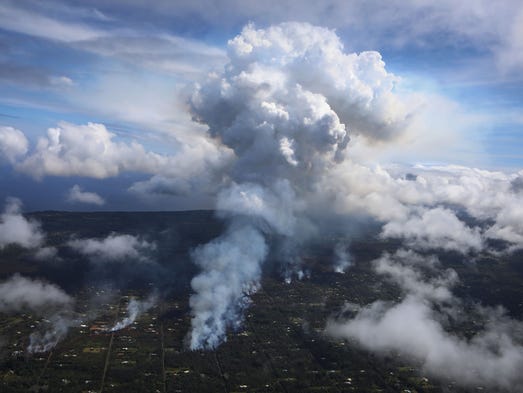
A plume of volcanic gas mixed with smoke from fires caused by lava rises (C) amidst clouds in the Leilani Estates neighborhood in the aftermath of eruptions from the Kilauea volcano on Hawaii’s Big Island on May 6, 2018 in Pahoa, Hawaii. MARIO TAMA/GETTY IMAGES
The fact that Kilauea is blowing its top shouldn’t be a surprise: Kilauea is one of the most active volcanoes in the world — and it has been erupting on and off for hundreds of thousands of years.
Located in the southeastern part of the Big Island, Kilauea has been erupting since 1983 with only occasional pauses. This particular episode of the eruption began in the late afternoon Thursday in Leilani Estates, a subdivision near the quaint town of Pahoa and 30 minutes south of Hilo.
Why is it erupting now? “We don’t know enough details about the internal plumbing to be able to give really precise answers to this question,” said Tracy Gregg, an associate professor of geology at the University at Buffalo. “The short answer is that a blob of new magma from deep below the volcano got injected up into the volcanic edifice.
Read more about Volcanoes here
http://www.newworldencyclopedia.org/entry/Volcano